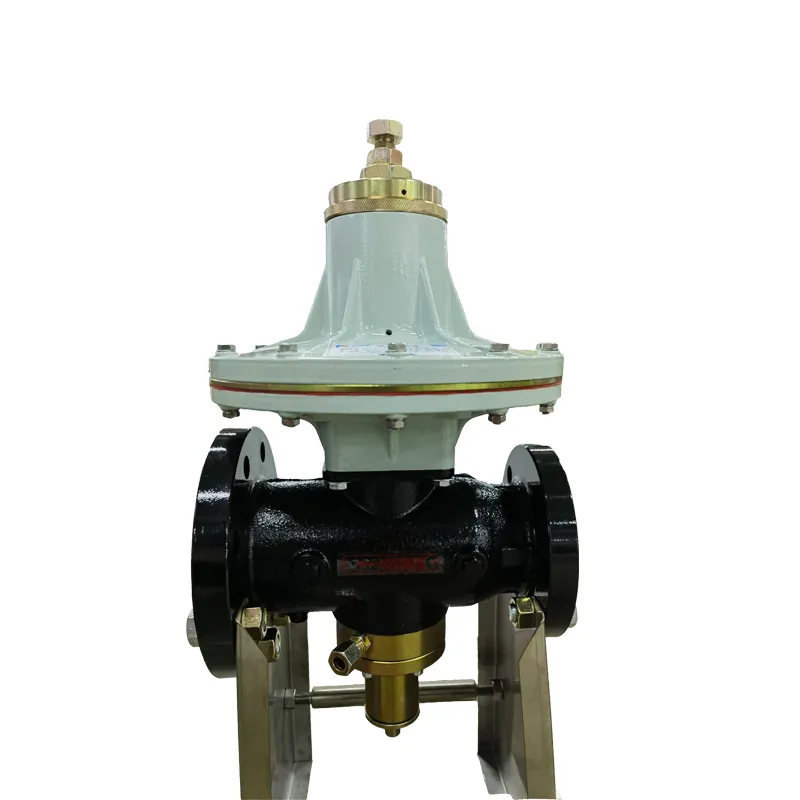
Nov . 16, 2024 23:01
Back to list
مخفض ضغط الغاز الطبيعي
Understanding Natural Gas Pressure Regulators
Natural gas is a vital source of energy across the globe, fueling homes, industries, and vehicles. However, transporting natural gas from production sites to end-users requires careful management of pressure levels. This is where a natural gas pressure regulator (مخفض ضغط الغاز الطبيعي) comes into play. This device plays a crucial role in maintaining the safe and efficient use of natural gas by regulating its pressure.
The Role of Natural Gas Pressure Regulators
Pressure regulators are mechanical devices used to maintain a desired pressure level in gas distribution systems. They function by reducing high inlet pressure from the supply line to a lower, more manageable outlet pressure. This is essential because the pressure of natural gas can fluctuate due to various factors, including temperature changes, flow rates, and line conditions.
How Natural Gas Pressure Regulators Work
The operation of a natural gas pressure regulator is based on the principles of fluid dynamics and mechanical engineering. Most pressure regulators employ a diaphragm mechanism, which responds to changes in downstream pressure. Here's a step-by-step breakdown of their working principle
1. High Inlet Pressure Natural gas enters the regulator at a high pressure from the supply line. 2. Diaphragm Movement As the gas passes through, it acts upon a diaphragm. In the absence of pressure at the outlet, the diaphragm is pushed upward, opening a valve that allows gas to flow through.
3. Pressure Regulation Once the outlet pressure reaches the desired level, it pushes against the diaphragm, which starts to close the valve, thus reducing the flow of gas until the pressures stabilize.
4. Constant Monitoring The regulator continuously monitors and adjusts to keep the outlet pressure within predefined limits, ensuring consistent and safe gas delivery.
Types of Natural Gas Pressure Regulators
There are several types of natural gas pressure regulators, each designed for different applications
مخفض ضغط الغاز الطبيعي

1. Two-Stage Regulators These regulators provide a more stable pressure by reducing the gas pressure in two steps. The first stage decreases the pressure to a moderate level, and the second stage further reduces it to the desired outlet pressure.
2. Single-Stage Regulators More straightforward in design, single-stage regulators are commonly used in residential applications where pressure fluctuations are minimal.
3. Back Pressure Regulators These regulators maintain a constant upstream pressure within a system, making them ideal for applications where specific pressure levels must be maintained.
Importance of Natural Gas Pressure Regulators
The importance of pressure regulators in the natural gas distribution network cannot be overstated. Here are key reasons why they are vital
1. Safety High-pressure gas can lead to dangerous situations, including explosions and leaks. Regulators mitigate these risks by ensuring the gas is supplied at safe pressure levels.
2. Efficiency By controlling the pressure of natural gas, these regulators ensure that appliances and systems function optimally, thus promoting energy efficiency. This is crucial for reducing wastage and lowering energy costs.
3. System Longevity Maintaining appropriate pressures helps in prolonging the lifespan of pipelines and appliances, reducing maintenance costs and enhancing the reliability of the gas supply.
4. Regulatory Compliance Many regions have stringent regulations governing natural gas delivery. Properly functioning pressure regulators ensure compliance with safety standards and legal requirements.
Conclusion
Natural gas pressure regulators are essential devices that ensure the safe and efficient transportation and use of natural gas. By carefully managing pressure levels, these devices protect both people and infrastructure while enhancing energy efficiency. As the world continues to rely on natural gas as a primary energy source, understanding the function and importance of pressure regulators becomes increasingly relevant for both industry professionals and consumers alike. With ongoing advancements in technology, the future of natural gas pressure regulation looks promising, paving the way for safer and more efficient energy solutions.
Latest news
-
Safety Valve Spring-Loaded Design Overpressure ProtectionNewsJul.25,2025
-
Precision Voltage Regulator AC5 Accuracy Grade PerformanceNewsJul.25,2025
-
Natural Gas Pressure Regulating Skid Industrial Pipeline ApplicationsNewsJul.25,2025
-
Natural Gas Filter Stainless Steel Mesh Element DesignNewsJul.25,2025
-
Gas Pressure Regulator Valve Direct-Acting Spring-Loaded DesignNewsJul.25,2025
-
Decompression Equipment Multi-Stage Heat Exchange System DesignNewsJul.25,2025

